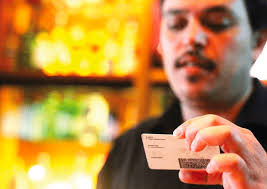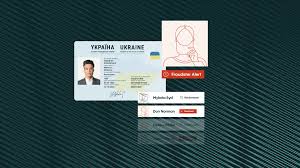Fake ID
Introduction
In today’s digital age, the line between the real and the fake is often blurred. From deepfakes to counterfeit currency, the world of counterfeiting is expanding, and identification documents are no exception. Fake IDs are no longer a mere trope in teen movies but a product that serves a wide range of purposes in real life. Whether it’s about accessing restricted services, maintaining privacy, or avoiding cumbersome bureaucracy, fake IDs have seen a significant increase in demand. This guide will break down everything you need to know about fake IDs, their uses, markets, and more.
Chapter 1: What is a Fake ID?
Fake IDs refer to counterfeit identification documents that replicate legitimate IDs but are created or obtained through illicit means. These include everything from fake driver’s licenses, passports, and even college IDs. While traditionally associated with underage individuals seeking entry to bars or clubs, fake IDs today serve a broader array of purposes.
1.1 Common Types of Fake IDs:
- Driver’s License: The most commonly requested fake ID, used to verify one’s identity and age.
- State ID: This non-driver ID serves the same purpose as a driver’s license but is primarily for identity verification.
- Passports: While harder to fake, passports provide international identity verification.
- Student ID Cards: Used to gain access to academic or institutional benefits.
1.2 Why People Use Fake IDs:
- Age Restriction: This is the most common reason among youth trying to circumvent age-based limitations for drinking, clubbing, or purchasing restricted items.
- Privacy Protection: Some individuals want to protect their privacy and avoid providing their real identity.
- Bypass Bureaucracy: Fake IDs are used by people who want to avoid the hassle of government documentation, such as immigrants or refugees.
- Entertainment and Pranks: Some people use fake IDs for harmless fun or practical jokes.
Chapter 2: Product Features of a Fake ID
When it comes to purchasing or creating fake IDs, the quality varies greatly. Understanding the features that make a fake ID good or bad is crucial, especially for those looking to avoid detection.
2.1 Key Features of High-Quality Fake IDs:
- Scannability: The ability to pass through ID scanners used in clubs, bars, or airports. High-quality fake IDs replicate the necessary barcodes or magnetic stripes for seamless scanning.
- Holograms and Watermarks: A significant feature that distinguishes legitimate IDs from poor-quality fakes. Holograms and watermarks, when reproduced with precision, can make a fake ID nearly indistinguishable from a real one.
- UV Light Features: Many IDs include UV-sensitive features that are visible under blacklight. Quality fakes incorporate these features to avoid detection.
- Embossing: Raised text or numbers can be a telltale sign of a real ID. A high-quality fake will often mimic this feature to further validate its authenticity.
- Durable Materials: Legitimate IDs are usually made from materials like polycarbonate. Good-quality fakes use similar materials to mimic the weight, thickness, and feel of genuine identification cards.
2.2 Customization Options:
- Photo Quality: The better the photo, the more believable the fake ID. Services offering fake IDs typically provide options to upload high-quality photos and choose various backgrounds for greater authenticity.
- Personalized Information: Buyers can input specific data like name, date of birth, and address to suit their specific needs.
Chapter 3: Market Analysis: Growth and Demand for Fake IDs
The fake ID industry is thriving, largely due to the increasing number of uses people have for these documents. From university students to professionals, more people than ever are seeking out fake IDs, driven by factors like restrictive legal regulations and growing online availability.
3.1 Global Demand:
- The U.S., Europe, and parts of Asia are major markets for fake IDs.
- Countries with stricter legal drinking or age verification laws often see higher demand.
- The rise of online marketplaces and digital anonymity has made fake IDs more accessible globally.
3.2 Major Players in the Market:
- Fake ID Vendors: There are numerous websites and black-market vendors that provide fake ID services.
- Online Forums and Social Media: Communities dedicated to sharing information, tips, and reviews on fake ID vendors have emerged on platforms like Reddit or Discord.
3.3 Price Analysis:
The cost of a fake ID can range anywhere from $50 to $500 depending on the quality, features, and vendor’s reputation. Higher-quality fake IDs that offer advanced security features such as holograms and scannability command higher prices.
Chapter 4: Target Audience for Fake IDs
Fake IDs have traditionally been associated with underage individuals attempting to gain access to age-restricted venues. However, the target audience is much broader today, and understanding who is likely to purchase a fake ID can provide insight into market trends and demand.
4.1 Underage Youth:
- College Students: The largest demographic looking to bypass age restrictions for activities like drinking or attending clubs.
- High School Students: In regions with a legal drinking age of 21, even high school students often seek fake IDs to gain access to alcohol or tobacco.
4.2 Frequent Travelers:
- Individuals Who Travel Frequently: Some people, especially those who travel to countries with strict documentation policies, look for fake passports or IDs to maintain anonymity or safety.
4.3 Individuals Seeking Privacy:
- Identity Protection Enthusiasts: People wary of sharing their real identity may use fake IDs to protect their personal information online or in public situations.
4.4 Corporate and Professional Use:
- Fraudulent Business Practices: Some professionals may use fake IDs to engage in identity-based fraud, open illicit bank accounts, or bypass corporate verification processes.
Chapter 5: Fake ID Legality and Ethical Concerns
Using or creating fake IDs raises serious legal and ethical concerns. It’s important to understand the legal landscape surrounding these products to fully grasp the potential risks.
5.1 Legal Implications:
- Possession of a Fake ID: In many countries, possessing a fake ID is a criminal offense. In the U.S., for instance, penalties range from fines to imprisonment depending on the circumstances.
- Using a Fake ID: Attempting to use a fake ID can lead to legal repercussions. Depending on the jurisdiction, these might include criminal charges or fines.
5.2 Ethical Considerations:
- Identity Theft: Using a fake ID can be associated with identity theft, which is a severe violation of privacy and personal security.
- Misuse in Crime: Criminals may use fake IDs for nefarious purposes, such as opening fraudulent bank accounts or conducting illegal transactions.
Chapter 6: The Future of Fake IDs: Trends and Innovations
As technology evolves, so too do the methods for creating and detecting fake IDs. Staying ahead of the curve in both creation and detection will shape the future of this market.
6.1 Technological Innovations in Fake ID Creation:
- 3D Printing: Advances in 3D printing technology are making it easier for people to replicate ID features like holograms and embossing.
- Blockchain Verification: Some experts speculate that blockchain technology could be used to create virtually undetectable fake IDs by replicating secure, decentralized identity verification systems.
6.2 Detection Advancements:
- AI and Machine Learning: With the growing ability of AI to analyze vast amounts of data, counterfeit ID detection systems are likely to become more accurate and widespread.
- Biometric Systems: Increasing reliance on biometric identification (fingerprints, facial recognition, etc.) in airports, banks, and other high-security environments may reduce the utility of fake IDs.
Conclusion
The world of fake IDs is complex and multifaceted. From youthful mischief to serious identity fraud, the market for counterfeit identification has grown and evolved with advancements in technology and a broader range of applications. However, with legal and ethical concerns looming large, it’s essential for users and vendors alike to fully understand the implications of their actions. Whether it’s about avoiding age restrictions, protecting one’s privacy, or navigating complex bureaucratic systems, the fake ID market is poised for continued growth as both technology and demand evolve.
This extensive guide has provided a deep dive into the world of fake IDs, exploring its features, markets, ethical concerns, and future trends. As this market continues to develop, it will be fascinating to see how technology, law enforcement, and ethics intersect in the ongoing struggle between authenticity and forgery.
 University ID Cards
University ID Cards
 novelty identification
novelty identification
 Fake University ID
Fake University ID
